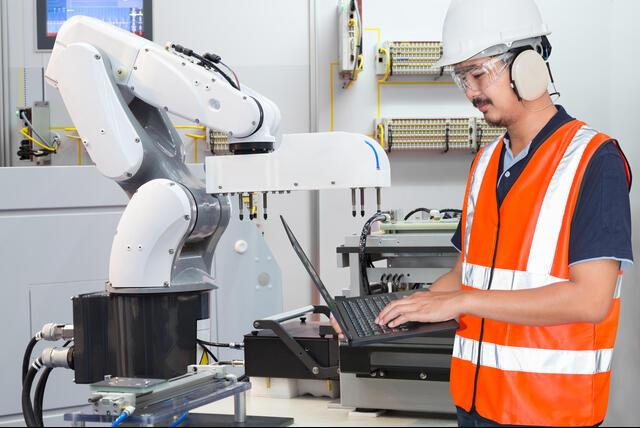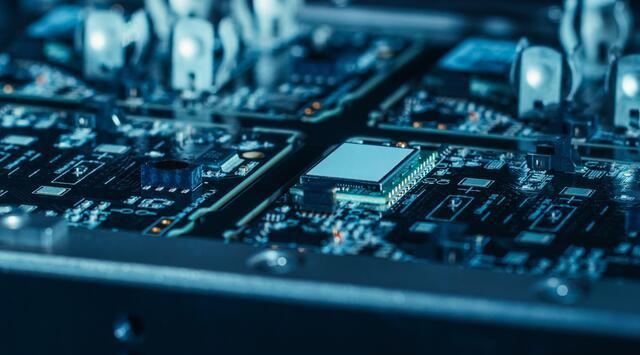Content Menu
● Introduction to SMT Stencils
>> Types of SMT Stencils
● Key Design Considerations for Customized SMT Stencils
>> Aperture Size and Shape
>> Stencil Thickness
>> Area Ratio and Aspect Ratio
>> Material Selection
>> Nano-coating and Electropolishing
>> Custom Aperture Designs
● Stencil Manufacturing Techniques
>> Laser Cutting
>> Chemical Etching
● Future Trends in SMT Stencil Technology
● Choosing the Right Stencil for Your Needs
● Design Software and Tools
● Stencil Maintenance and Cleaning
● Common Challenges in SMT Assembly
● Economic and Environmental Considerations
● Conclusion
● FAQs
>> 1. What is the purpose of a customized SMT stencil?
>> 2. How do I choose the right material for my SMT stencil?
>> 3. What is the importance of stencil thickness in SMT assembly?
>> 4. How often should I clean and inspect my SMT stencil?
>> 5. What are the benefits of using nano-coating on SMT stencils?
● Citations:
Designing a customized SMT (Surface Mount Technology) stencil is a crucial step in ensuring the quality and efficiency of PCB (Printed Circuit Board) assembly. A well-designed stencil can significantly reduce defects and improve the overall yield of the production process. In this article, we will explore the key factors to consider when creating a customized SMT stencil.

Introduction to SMT Stencils
SMT stencils are thin metal sheets with laser-cut apertures that match the component pads on a PCB. They are used to apply solder paste precisely onto the pads, ensuring accurate and consistent soldering. The design of an SMT stencil involves several critical parameters that must be carefully considered to achieve optimal results.
Types of SMT Stencils
There are several types of SMT stencils, including framed stencils, frameless stencils, and prototype stencils. Framed stencils are mounted on a frame and are ideal for high-volume production due to their stability and reusability. Frameless stencils, on the other hand, are more flexible and can be used with tensioning systems. Prototype stencils are custom-made for specific prototype PCBs and are useful for manual printing processes.
Key Design Considerations for Customized SMT Stencils
Aperture Size and Shape
The size and shape of the stencil apertures are critical for achieving the right solder paste volume and preventing defects. Apertures should be slightly larger than the PCB pads to account for paste shrinkage during reflow. Common aperture shapes include rectangles, circles, and home plates, with round or square shapes being most common for standard components. For specific components or to control paste volume, other shapes may be used. The choice of aperture shape and size must adhere to minimum guidelines to ensure proper paste release and prevent bridging[1].
Stencil Thickness
The thickness of the stencil affects the solder paste volume and print quality. Thicker stencils provide more robust deposits but may hinder paste release, while thinner stencils are better for fine-pitch components but may struggle with sufficient paste volume. The choice of thickness depends on the PCB design, component specifications, and solder paste characteristics. For example, fine-pitch components typically require thinner stencils to ensure precise paste application[1][6].
Area Ratio and Aspect Ratio
- Area Ratio: This is the ratio of the aperture opening area to its wall area. A higher area ratio improves paste release efficiency, with a recommended minimum of 0.66.
- Aspect Ratio: Defined as the aperture width divided by the stencil thickness, it affects paste transfer. A minimum aspect ratio of 1.5 is typically recommended to prevent clogging.
Material Selection
Stencils are commonly made from stainless steel, fine grain steel, or nickel. Stainless steel is popular due to its durability and resistance to corrosion. Fine Grain (FG) stainless steel offers smoother stencil walls and crisper steps, making it ideal for high-precision applications[6]. Electroformed nickel stencils provide naturally polished apertures, enhancing paste release.
Nano-coating and Electropolishing
Applying a nano-coating can improve paste release by enhancing the stencil's hydrophobic properties, reducing the need for frequent cleaning. Electropolishing smooths microscopic imperfections on the stencil surface, further improving paste release and print quality[1]. Recent advancements include the use of Chemical Vapor Deposition (CVD) treatments, which offer enhanced corrosion resistance and smoother surfaces, improving transfer efficiency[8].
Custom Aperture Designs
For challenging components or unique PCB layouts, custom aperture designs can be implemented. This may include modified shapes, stepped apertures, or specialized patterns to address specific printing requirements. Step stencils, for instance, have local recesses or bumps that can be created using advanced laser cutting techniques, reducing production time and costs[5].
Stencil Manufacturing Techniques
Laser Cutting
Laser cutting is the most common and precise method for creating stencil apertures. High-powered lasers are used to cut the desired aperture shapes and sizes into the stencil material, offering excellent accuracy and repeatability. This method is ideal for creating fine-pitch apertures and complex designs[1].
Chemical Etching
Chemical etching is an alternative process that involves using a photoresist mask and chemical solution to create apertures. While less precise than laser cutting, it can be cost-effective for larger apertures or thicker stencils[1].

Future Trends in SMT Stencil Technology
Advancements in SMT stencil technology include the use of additive manufacturing for complex multi-level stencils and the integration of sensors for real-time feedback on print quality. These innovations aim to enhance precision, durability, and efficiency in PCB assembly processes[1][3].
Choosing the Right Stencil for Your Needs
When selecting a customized SMT stencil, consider the production volume, component types, and specific PCB design requirements. Framed stencils are ideal for high-volume assembly, while frameless stencils offer flexibility for smaller batches. For complex PCBs, advanced materials like PVD-coated stencils can provide superior precision and longevity[3].
Design Software and Tools
Utilizing design software can streamline the stencil design process by allowing semi-automatic creation based on libraries of proven apertures. This helps maintain consistency and reduces errors. Designers should review PCB layouts to optimize stencil performance, considering factors such as component type, population density, and PTH presence[6].
Stencil Maintenance and Cleaning
Regular cleaning and inspection are essential for maintaining stencil performance. Methods include manual wiping with solvents, ultrasonic cleaning, or automated systems. Proper storage in a clean, dry environment helps extend the stencil's lifespan. Handling stencils with care, using gloves to prevent contamination, is also crucial[4].
Common Challenges in SMT Assembly
SMT assembly faces several challenges, including solder bridges, improper soldering, and component placement issues. These challenges can be mitigated by optimizing stencil design and ensuring precise solder paste application. Adhering to industry standards like IPC-7525 and IPC-610 can help achieve consistent quality[2][7].
Economic and Environmental Considerations
In today's economic climate, manufacturers must balance efficiency with cost-effectiveness. Customized SMT stencils can help reduce waste and improve yield, contributing to cost savings. Additionally, advancements in stencil technology aim to minimize environmental impact by reducing chemical usage and improving durability[2][3].
Conclusion
Designing a customized SMT stencil requires careful consideration of several key factors, including aperture size and shape, stencil thickness, material selection, and maintenance practices. By optimizing these parameters, manufacturers can significantly improve the quality and efficiency of their PCB assembly processes.

FAQs
1. What is the purpose of a customized SMT stencil?
A customized SMT stencil is designed to precisely match the component layout of a specific PCB, ensuring accurate solder paste application and minimizing defects in the assembly process.
2. How do I choose the right material for my SMT stencil?
The choice of material depends on the desired durability and performance. Stainless steel is commonly used due to its resistance to corrosion and durability, while nickel offers naturally polished apertures for better paste release.
3. What is the importance of stencil thickness in SMT assembly?
Stencil thickness affects the solder paste volume and print quality. Thicker stencils provide more robust deposits but may hinder paste release, while thinner stencils are better suited for fine-pitch components.
4. How often should I clean and inspect my SMT stencil?
Regular cleaning and inspection are crucial for maintaining stencil performance. Cleaning should be done after each use to prevent aperture clogging, and inspections should be conducted regularly to check for damage or wear.
5. What are the benefits of using nano-coating on SMT stencils?
Nano-coating enhances the hydrophobic properties of the stencil, improving solder paste release and reducing the need for frequent cleaning. This results in better print quality and longer stencil lifespan.
Citations:
[1] https://pcbpit.com/smt-stencil-a-comprehensive-guide/
[2] https://blog.intraratio.com/revolutionizing-smt-manufacturing-amidst-economic-challenges
[3] https://www.precedenceresearch.com/news/stentech-launches-bluprint-pvd-stencils-for-smt-production-in-us
[4] https://rigidflexpcb.org/comprehensive-guide-to-smt-stencils/
[5] https://www.lpkfusa.com/case-studies/smt-stencil
[6] https://www.ipc.org/system/files/technical_resource/E38&S12-02%20-%20Chrys%20Shea.pdf
[7] https://www.viasion.com/blog/common-challenges-in-smt-assembly-and-solutions/
[8] https://www.stentech.com/company/cvd-treatment-for-smt-stencils
[9] https://olinapcb.com/blog/how-to-maintain-and-clean-smt-stencil/
[10] https://www.epectec.com/smt-stencils/
[11] https://fctsolder.com/wp-content/uploads/2017/08/123386-361848.smt-printing-challenges.pdf
[12] https://www.protoexpress.com/blog/common-errors-surface-mount-technology-smt/
[13] https://blueringstencils.com/bluerings-data-driven-approach-to-innovation/
[14] https://silmantech.com/how-to-prolong-the-lifespan-of-smt-stencils/
[15] https://j-teq.co.uk/solder-paste-stencil-design-reflow-technology/
[16] https://www.linkedin.com/pulse/smt-stencil-preparation-tips-tricks-design-software-alex-akulin-z2aif
[17] https://www.bigmateph.com/what-are-the-common-challenges-of-smt-and-how-to-overcome-it/
[18] https://www.stentech.com
[19] https://www.raypcb.com/smt-stencil-cleaning-operation-content-and-precautions/
[20] https://www.linkedin.com/pulse/16-case-studies-improving-soldering-defects-through-optimization-%E6%99%93%E5%8D%8E-%E5%90%B4-sxfrc




















